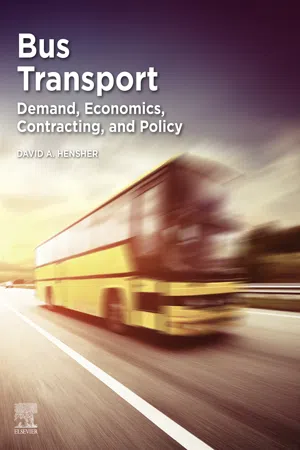Public transport is a theme of enormous importance in all societies. The bus is the most patronised of all land–based public passenger modes. It is however seen as a somewhat unglamourous means of supporting mobility and accessibility (in contrast to rail – heavy and light), yet offers so much to the travelling public as well as offering attractive sustainability opportunities. We recognise however that attracting and retaining public transport patronage in general, and bus in particular, is a growing challenge in many countries, developed and developing, rich and poor, and will be further exacerbated in economies that are moving towards a high level of economic efficiency and wealth, where the desire and ability to own and use an automobile will continue to impact the future of all forms of land-based public transport, especially for the majority of urban and regional travel. This future may be at further risk with the introduction of autonomous cars.
There is no doubt that the role of urban public transport is continuing to change. The gradual loss of market share in large metropolitan centres, typical of many western cities (despite some promising signs of a reversal in some cities), is a product of public transport being unable to be responsive to the changing needs of the market, while the car, due to its inherent attributes of flexibility and convenience, keeps pace with people's ever changing transport needs. If there are three overriding characteristics portraying the current market profile, it is increasing real wealth for most groups but not all, greater complexity of activities undertaken in the daily life cycle, and the flexibility offered by alternative forms of transport (and non-transport responses such as working from home). These are strong forces of change, which move conventional regular fixed route public transport even further away from meeting many mainstream demands. Certainly, there are some signs of increasing use of public transport, although modal shares are going the other way – for many reasons such as longer train trips to lower priced residential locations, but the impact on the overall transport task is often small.
In many western societies and a growing number of developing economies, motorised urban public bus and rail transport is a niche market provider and looks like being so for the foreseeable future, even with new opportunities enabled by the increasing availability of digitally supported technology to better inform the public of the service opportunities provided by public transport. It is also unclear what role the bus might play in and future multi-modal developments associated with Mobility as a Service (MaaS), although there is a growing sense that without public transport at the centre of MaaS, it will be nothing more than a car-based offering that will be opposed by governments globally. But what market niches are we talking about? The answer lies in the realm of the diversity of customer needs (both real and latent) and the types of services that can be offered through public transport to capture some (even if small) amounts of particular passenger markets. For example, commuters with a fixed workplace, travelling during the morning and evening peak between two locations with plenty of traffic, and who have no commitments before or after work, other than to get to and from home, are good candidates for public transport use; school children; adults on very low household incomes; special events (sporting, cultural etc.), and the elderly in declining health who cannot drive.
This book reflects the author's perspective on issues of importance to the preservation and health of the bus sector. The thirty four (34) chapters are edited versions of papers and reports written over the last twelve years, many of which have been published in journals and edited conference proceedings, while some are reports commissioned by transport authorities and associations. The research presented in this volume is intended to capture the debate on the role and relevance of the bus sector.
In preparing this document, I have selected papers that cover the themes of institutional reform, performance measurement and monitoring, service quality, travel choice and demand, integrated bus-based systems (referred to a bus rapid transit, busways, transitways), energy contrasts between PT modes, challenges in promoting bus over rail, and public transport policy, especially challenges in growing patronage, disruptive technology and mobility as a service (MaaS).
I have been privileged to work with many fine researchers who have co-authored earlier versions of many of the chapters. I am indebted to Yale Wong (Chapters 3, 5, 18, 32 and 33), John Stanley (Chapters 3,6 and 30), Corinne Mulley (Chapters 8, 14, 19, 20, 27, 29, 32 and 33), Neil Smith (Chapter 8), Chinh Ho (Chapters 12, 14, 19, 20, 28 and 32), Louise
Knowles (Chapter 12), Zheng Li (Chapters 16, 17, 22 and 23), Loan Ho and Geoffrey Clifton (Chapter 18), Camila Balbontin (Chapters 20 and 30), Alejandro Tirachini (Chapters 24 and 25), John Rose (Chapter 24), Julieta Legaspi (Chapter 26), Baojin Wang (Chapter 26), Glen Weisbrod (Chapters 27 and 28), Richard Ellison (Chapter 28), David Cosgrove (Chapter 29) and Janet Stanley (Chapter 30).
I also wish to thank the many researchers who have provided an opportunity for dialogue on the many issues discussed in this book. In particular, I acknowledge the support of Michael Apps, Bill Greene, Sergio Jara-Diaz, Chandra Bhat, Ian Wallis, Juan de Dios Ortuzar, Juan Carlos Munoz, Ricardo Giesen, Jackie Walters, John Nelson, Darryl Mellish, Matt Threlkeld, Stephen Rowe, Didier van de Velde, John Preston, Chris Nash, Neil Smith and David Bray.
